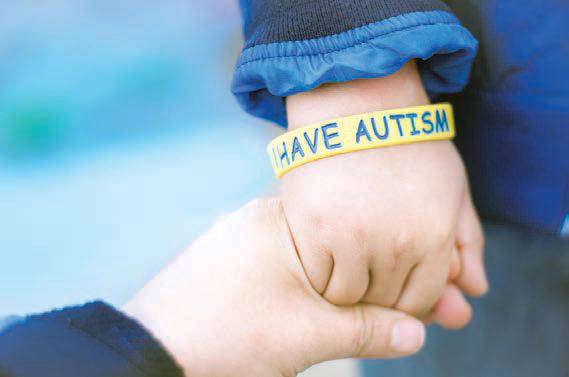Christine M. Raches, Elesia N. Hines, and Angela M. Tomlin, Indiana University
Abstract
Accurate diagnosis of Autism Spectrum Disorder (ASD) at an early age is increasingly sought so that the child and family can access early intervention and supports. However, not all children neatly fit into the diagnostic criteria for ASD, and additional assessment and supports are often required as providers continue to evaluate the possibility of a diagnosis. This article illustrates the complexity of diagnosis and discusses a logical progression of assessments and interventions for Joseph, a then 32-month-old boy, initially referred for an evaluation because of speech and language delays. The authors discuss the difficulty of an uncertain outcome following assessment and intervention. They reflect on their own experiences and lessons learned over the course of the treatment and evaluation process.
Advances in understanding the presentation of Autism Spectrum Disorder (ASD) in infants and young children, in combination with better screening and diagnostic practices, has increasingly led to lower ages of diagnosis and entrance into services (Boyd, Odom, Humphreys, & Sam, 2010). For example, the mean age of diagnosis of ASD in the United States has long been reported as 4–5 years old (Filipek et al., 1999), but is now trending toward a mean age of 2.7 years (Baird et al., 2001). As a result of this progress, earlier diagnosis is not only possible but is now an expectation. Families may have heard of evidence-based interventions that can be accessed only with a specific diagnosis, leading them to push for the diagnosis. In addition, in many parts of the country, long waits for diagnostic appointments are common, adding to the pressure that families and providers can feel to complete a diagnosis. The story that follows illustrates the complexities and challenges of early identification and ASD in young children through the story of Joseph and his family.
Initial Referral and Screening
Joseph was a 32-month-old boy who lived in a suburban area of a large metropolitan city. He lived with his mother, father, and school-age sister. Both of his parents worked outside of the home, and Joseph attended a child care program 3½ days a week. His mother was employed in a health care-related field, and his father worked in a professional office environment. At the time of the initial referral, Joseph participated in early intervention services because of concerns about delays in speech and language development. He received speech therapy, developmental therapy, and occupational therapy. The transition to an early childhood education program through a local school corporation had begun; however, the family had plans to move prior to the next academic year and were unsure of the ideal timing for an evaluation to be completed.
Joseph was referred to the clinic for an autism evaluation through the local Part C program because of ongoing concerns with speech development and social communication. In children who eventually receive a diagnosis of ASD, speech concerns are often identified by parents when the child is 15–18 months old, with social deficits appearing around 2 years old (Johnson, Myers, & Council on Children With Disabilities, 2007). Although the American Academy of Pediatrics (AAP) recommends developmental surveillance at every pediatric preventative care visit (AAP, 2006), it is unclear whether Joseph’s primary care provider completed any developmental or autism-specific screeners during well-child visits. Developmental screening with a standardized tool is recommended at specific intervals (i.e., at the 9-, 18-, 24- or 30-month well-child visits) or when concerns are identified by the caregiver or health professional. Autism-specific screening is also recommended during well-child visits at 18 and 24 months, along with developmental surveillance and screening. If screening or clinical impression indicate concern for ASD, the child should be referred for a formal diagnostic evaluation (Johnson, Myers, & Council on Children With Disabilities, 2007).
Diagnostic Interview and Autism-Specific Screening
As a part of the original psychological consultation, Joseph’s parents were interviewed, and a thorough developmental history was obtained. His parents expressed concerns about his speech development but had no other concerns about his development. At the time of the consultation, Joseph communicated through the use of single words, pointing, and head shaking. He was able to make choices and understand directions. His parents described his eye contact as appropriate at times. They felt that he did not make eye contact when pressured and described him as slow to warm up. They shared that transitions were hard for him, and he had a low frustration tolerance.
Additional information was obtained from other providers working with Joseph. One of his Part C therapists noted concerns with possible ASD. She reported that Joseph lined up toys, did not engage in pretend play, and had reduced eye contact. However, she also noted that Joseph was able to engage in silly interactive games with others. Joseph’s child care provider indicated that Joseph was happy and eager to learn, caught on to concepts quickly, and played well independently. He followed directions, participated in class activities, and paid attention during circle time. The provider noted that Joseph cried at drop off and during transitions at the beginning of the year; however, his crying decreased over the course of the year. She also described significant progress with Joseph’s ability to play with other children. With regard to language and communication, his child care provider indicated that Joseph struggled to use language independently. He repeated most things when prompted and was beginning to make requests by saying “more” during snack or an art activity.
As a part of the diagnostic consultation, Joseph’s parents completed the Infant-Toddler Social and Emotional Assessment (Carter, Little, Briggs-Gowan, & Kogan, 2000). Overall, his parents reported items that align with developmental delays and did not report behaviors that align with ASD. The psychologist administered the Screening Tool for Autism in Toddlers and Young Children (STAT; Stone, Coonrod, & Ousley, 2000). The STAT is an empirically developed measure to assess for risk for ASD in children between 24 and 36 months old. Joseph’s overall performance on the STAT was below the cut-off score that indicates possible ASD at his age. During the STAT, Joseph showed some nice skills and struggled in other areas. For example, the psychologist noted that Joseph could play with another person by rolling a car back and forth. He requested items using sign language paired with eye contact. He gained adult attention on several occasions, including showing toys. He imitated actions and joined his mother in play. However, Joseph did not engage in functional pretend play and did not imitate the psychologist’s hand movements or actions with toys. In addition to the STAT, the psychologist made informal behavioral observations and noted that Joseph was very careful during his independent play. He collected building blocks by color and he demonstrated frequent patterned play. She also observed more social smiles during informal observations.
Following the diagnostic consultation, the psychologist recommended that Joseph participate in a more extensive autism-specific assessment. This recommendation adhered to the guidelines set forth by the AAP when there are ongoing concerns about possible ASD (Johnson, Myers, & Council on Children With Disabilities, 2007). Given the long wait time often associated with autism-specific assessments, Joseph was simultaneously referred for treatment with a trained therapist in the Early Start Denver model (ESDM; Rogers & Dawson, 2010).
Intervention: The ESDM
ESDM was specifically developed as a comprehensive relationship-based behavioral treatment for use with toddlers (12–60 months old) diagnosed with or considered to be at risk for ASD. The premise is to understand how children “typically develop” and to facilitate a similar developmental pathway for children diagnosed with ASD (Rogers & Dawson, 2010). ESDM integrates developmental principles with strategies derived from applied behavior analysis throughout a child’s daily routine. ESDM includes opportunities for teaching in all daily situations (e.g., eating, bathing, play, outdoors, community events) and with all caregivers. ESDM emphasizes learning through positive, socially engaging, and child-led interactions leading to warm, socially reinforcing interactions between the child and the parents.
ESDM centers on joint activities in which the adult and child have key roles and expand on the play scenario. Play interactions are child centered, and adults share control of the play by selecting what items are available to the child, what actions are modeled and reinforced, and how the activities are sequenced during their time together. Family involvement is a core teaching strategy, an essential component of ESDM, and is considered best practice in early autism intervention in general (Iovannone, Dunlap, Huber, & Kinkaid, 2003). Family involvement incorporates those interacting with the child outside of a therapy situation. It promotes learning, generalization, and engagement (Rogers & Dawson, 2010). There is also evidence that as parents become more attuned to their child’s interests and increase their social responding, the child’s rate of development will increase. Thus, by including parents, practitioners can accelerate the progress of early intervention (Rogers & Dawson, 2010).
Joseph was referred for treatment using ESDM-Parent Coaching (P-ESDM; Rogers & Vismara, 2014). In the parent coaching model, parents participate in 60-90 minute sessions focused on coaching and feedback on their implementation of the ESDM teaching techniques over 12 sessions (Rogers & Vismara, 2014). Both of Joseph’s parents participated in weekly therapy sessions following the curriculum established in “An Early Start for Your Child With Autism” (Rogers, Dawson, & Vismara, 2012). Studies have shown that parents who participated in this type of treatment showed increased parent engagement and competency (Waddington, van der Meer, & Sigafoos, 2016).
During treatment, the therapist provides coaching during several small play activities that include skills that parents want to develop. The 12 sessions were developed to assist families in working on specific, weak areas exhibited by the child and include building back-and forth-interactions, nonverbal communication, imitation, sharing interests, speech use, and pretend play (Rogers et al., 2012). The goal is for parents to demonstrate the ability to continue working on these skills outside of therapy time.
Individualized treatment planning using ESDM requires the administration of a skills assessment (the Curriculum Checklist). The Curriculum Checklist was administered across two separate sessions with Joseph and his parents. At the initiation of treatment, Joseph’s parents continued to be concerned about Joseph’s communication and perceived delays in social skills. Joseph was observed being able to engage in turn-taking when hand-over-hand assistance was used. He was able to make choices between two objects, and he could complete a wooden puzzle. Joseph had difficulty using words to request and communicate, and he responded to his name approximately 50% of the time. He was able to imitate gross motor movements with a model. The practitioner observed that during novel play interactions, when something “unexpected” occurred (i.e., his parents placed an animal down the race ramp instead of a car), Joseph had an increase in eye contact, vocalizations, and attempts at interactions.
On the basis of his performance on the Curriculum Checklist, Joseph’s goals for treatment centered on following directions, responding consistently to his name, making clear choices using gaze and vocalization, interacting with others in an appropriate manner, distally pointing to desired items, and sensory social play. He also had goals related to imaginative play, imitation, and interactive play with familiar adults.

Reflective practice is often associated with best practices in developing and sustaining relationships with families.
Joseph’s parents were invested in treatment and read the assigned readings each week in preparation for therapy. During sessions, Joseph’s parents were inquisitive and easily accepted coaching and feedback. They provided a significant amount of support for Joseph; at times, it appeared that they anticipated his needs and met his requests before Joseph made them. His parents were coached to pause and wait for Joseph to approach them for play and assistance. His parents also received coaching on behavior management including the use of praise and planned ignoring of negative behaviors. Joseph’s parents quickly demonstrated competence on skills, and a new skill was introduced during each session. During conversations and check-ins throughout the sessions, his parents identified that new environments were much harder for Joseph than for his older sister, and they sought out ways to help with transitions and changes in his routine. Specifically, they were interested in strategies to help with the introduction of new sports activities or lessons.
In total, Joseph’s family was seen for 14 treatment sessions over the course of 6 months. The family was successfully able to complete the entire P-ESDM curriculum and showed tremendous progress and mastery of skills. In addition, his parents noted growth in Joseph’s play and interactions at home, and they shared videos and stories regarding peer interactions at child care and in the community. They noted that, while Joseph continued to have a speech delay, they felt more confident in their teaching strategies and were no longer concerned about his play skills and interactions. His parents expressed an interest in continuing to work together on persisting skill deficits. It was interesting that, despite much improvement, the treatment provider continued to document some instances of rigid and patterned play, inconsistent eye contact, and inconsistent use of nonverbal gestures. She also noted that Joseph was not consistently accepting invitations to play and continued to need prompting during turn-taking tasks. Because of these lingering concerns, Joseph’s parents and the psychologist agreed to speak again following his autism-specific evaluation.
Autism-Specific Evaluation
Seven months after his initial diagnostic interview, Joseph and his parents attended an autism-specific psychological evaluation with a clinical psychologist who specialized in evaluations during early childhood. Joseph had turned 3 years old prior to his evaluation and was no longer eligible for Part C services. He continued to receive outpatient speech and developmental therapies through a local outpatient clinic. At the time of the evaluation, an early childhood school assessment had not occurred.

Earlier diagnosis of autism spectrum disorder is not only possible but is now an expectation.
During the interview portion of the evaluation, Joseph’s parents reported that he had made “drastic” developmental progress within the past 6 months. They explained that he was more outgoing and interested in peer interaction. He was willing to join other children in play, but he also initiated play with familiar and unfamiliar children. Joseph’s parents had observed an increase in pretend play and a decrease in repetitive play (e.g., lining up toys). They denied significant sensory concerns, repetitive motor mannerisms, or difficulty adjusting to change. However, they continued to have concerns about his language skills.
Joseph was administered the Autism Diagnostic Observation Schedule, Second Edition (ADOS-2; Lord et al., 2012) with his father present in the room. The ADOS-2 is a semistructured, standardized assessment of communication, social interaction, play/imaginative use of materials, and restricted and repetitive behaviors. It is considered the “gold-standard” assessment for autism. However, it is important to note that the ADOS-2 result alone is insufficient for a diagnosis of autism. Instead, ADOS-2 classifications must be part of a full evaluation yielding information that is used by qualified professionals to determine a diagnosis. A trained examiner elicits, rates, and scores the child’s social affect and restricted and repetitive behaviors. Totalscores are classified as falling either in the autism spectrum or non-autism range. Joseph’s total score was in the non-spectrum range, indicating that he demonstrated few behaviors associated with ASD during the ADOS-2.
During the ADOS-2, Joseph used single words and occasional phrases to narrate his play, make requests, and label toys. Joseph inconsistently directed vocalizations toward the adults for the purposes of requesting and expressing interest. Joseph pointed to items in the room and vocalized his request, but he did not coordinate eye contact with his pointing. He also displayed communicative reaching but no other nonverbal gestures. With regard to social interaction, Joseph frequently attempted to gain and maintain his father’s attention. He initiated a playful, reciprocal activity with his father, and he also invited his father to pop bubbles with him by tugging on his hand and pulling him from his chair. Joseph also made some attempts to gain the psychologist’s attention while playing with toys. He frequently showed and gave items to the adults. Joseph’s eye contact improved throughout the ADOS-2 administration and was appropriate after he became more comfortable with the situation. He directed social smiles toward the adults and shared his enjoyment during activities. Joseph responded to his name when called by his father but not when called by the psychologist. He used the psychologist’s eye gaze to locate an item in the room but did not initiate joint attention in order to direct the adults’ attention to items.
Joseph demonstrated functional and pretend play during the evaluation. No unusual sensory interests, motor mannerisms, or unusually repetitive behaviors were observed. On one occasion, Joseph displayed mild resistance when the psychologist removed the pop-up toy in order to transition to another activity. He vocalized, pulled on the toy, and looked at his father for assistance. He was easily redirected and transitioned to the next task.
Joseph’s mother completed the Autism Spectrum Rating Scales (Goldstein & Naglieri, 2010). The scale is a standardized, norm-referenced rating scale designed to identify symptoms, behaviors, and associated features of ASD in children and adolescents. According to his mother’s responses, the pattern of scores indicated that Joseph demonstrated few behavioral characteristics that are similar to those exhibited by children diagnosed with ASD. The peer socialization and adult socialization scales indicated difficulties with starting and maintaining appropriate conversations with others. Joseph’s mother also completed the Adaptive Behavior Assessment System-Third Edition (Harrison & Oakland, 2015) in order to evaluate Joseph’s ability to complete activities of daily living. Overall, his mother reported his adaptive skills to be in the low range when compared to other children his age.
On the basis of the parent reports and direct testing with Joseph, the psychologist determined that Joseph’s behavior did not meet the Diagnostic and Statistical Manual of Mental Disorders, Fifth Edition (DSM-5) diagnostic criteria for ASD (American Psychiatric Association, 2013). Instead, Joseph was diagnosed with an expressive language delay.
Although Joseph did not evidence a high number of behaviors related to ASD during the standardized assessment, the psychologist had concerns about the inconsistency of his social communication skills. For example, Joseph demonstrated some nice social strengths (e.g., showing and giving toys to the adults, directing social smiles, attempting to gain and maintain the adults’ attention); however, he also did not display other social communication skills that would have been expected (e.g., initiating joint attention and nonverbal gestures beyond pointing and reaching). At times, the psychologist experienced Joseph’s social skills as rote or practiced. As a result, although an ASD diagnosis was not appropriate at the time, it could not definitively be ruled out.
The psychologist shared her observations and diagnostic impressions with Joseph’s parents. She recommended that Joseph’s behavior and social interaction skills continue to be monitored by his parents, treatment providers, and teachers. The psychologist also explained that a re-evaluation may be warranted in the future if additional concerns arose regarding Joseph’s peer interaction skills or behavior (e.g., increase in repetitive behaviors, rigidity, or sensory concerns). She encouraged Joseph’s parents to follow through with their plans to have Joseph evaluated by the local school corporation and to continue outpatient therapies. Although Joseph’s parents expressed relief that he was not receiving an ASD diagnosis, they were confused and disheartened that the psychologist could not assure them that Joseph would never meet criteria for an ASD diagnosis.

Best practice states that professionals should strive to identify autism spectrum disorder as early as possible to allow for the initiation of autism-specific assessments and therapies.
Summary
From beginning to end, Joseph’s treatment plan followed the best practice guidelines put forth by the AAP (Johnson, Myers, & Council on Children With Disabilities, 2007). Joseph was seen before 3 years old for an autism-specific consultation, was administered an autism-specific screening measure, and was referred simultaneously for treatment and further assessment. Although he passed the autism-specific screening, clinical intuition and behavioral observations suggested the need for additional assessment. A referral was made for intervention to work on identified skill needs while the family waited for the autism-specific assessment. Joseph made tremendous progress in treatment with regard to eye contact, response to name, and social interactions. His parents contemplated canceling his assessment appointment and eventually decided to keep the appointment to have diagnostic confirmation.
The assessment of Joseph’s skills with a focus on autism-related behaviors revealed that he did not meet diagnostic criteria (American Psychiatric Association, 2013), and a diagnosis of ASD was not given. However, the psychologist who administered the assessment continued to wonder about mild social communication deficits and atypical social interactions that were observed during the assessment (e.g., absence of pointing to initiate joint attention, decreased coordination of eye contact and pointing while requesting, rote play skills). The psychologists felt that many of Joseph’s play skills were practiced and had been targeted heavily during ESDM treatment. They did not appear to be spontaneous and were, at times, scaffolded by his father. During the feedback session, the psychologist shared these concerns with Joseph’s parents and made appropriate recommendations regarding treatment and educational planning. The psychologist explained that a reassessment may be warranted in the future if his parents, treatment providers, or teachers observed behaviors concerning for ASD.
Despite following the AAP’s recommendations related to the identification and evaluation of children with ASD, three psychologists with expertise in early childhood mental health and developmental disabilities continued to question whether Joseph had autism. Although they were pleased with Joseph’s developmental progress while participating in ESDM and early intervention services, they continued to suspect that Joseph had ASD. Joseph’s skills may have been bolstered by his participation in early intervention services and ESDM. If the supports and parental scaffolding were no longer available, the psychologists questioned whether his social communication deficits would become more apparent or if other restricted and repetitive behaviors would emerge. In this particular situation, more intervention and more time were needed.
Lessons Learned
The providers met multiple times to discuss the outcome of the assessment and to reflect on their own experiences over the course of the treatment and evaluation process. Several lessons emerged from their conversations.
- Parents and providers may each have responses to the outcome of the assessment. Understandably, Joseph’s family struggled with the lack of certainty in ruling out ASD and the reality that a reassessment may be necessary in the future. The providers understood that being unable to “close the door” on an ASD diagnosis was difficult feedback to receive, especially after Joseph had demonstrated significant social gains. After the autism-specific assessment, the family did not attempt to schedule additional appointments in the clinic, despite previous interest and the evaluating psychologist’s recommendation. Attempts to reach the family via phone calls and letters went unanswered. It is unknown whether Joseph enrolled in an early childhood educational program or continued to receive needed therapies.Joseph was within the age range that ASD can be and is reliably diagnosed. In most instances the process described leads to an answer about diagnosis. However, Joseph’s symptom pattern was not clear. Joseph passed every standardized assessment administered, but clinical intuition and informal behavioral observations continued to highlight social communication deficits. These behaviors and concerns were present even after early intervention and completion of P-ESDM. Thus, the providers were left in the uncomfortable position of not being able to answer the diagnostic question.The providers wondered together what they could have done differently to continue nurturing a relationship with this family and revisited the evaluation results to reflect on the process. The providers also struggled with the uncertainty of Joseph’s diagnosis moving forward. They questioned the accuracy of the testing results as well as the accuracy of their clinical intuition. The abrupt ending to the professional relationship as well as lingering uncertainty prevented closure and any opportunities to further process the evaluation results with the family.
- Reflective skills are essential in work with infants and toddlers. Reflective practice is often associated with best practices in developing and sustaining relationships with families. Reflection is also just as important when supporting a family through the process of completing diagnostic assessments. Furthermore, use of reflection by professionals to process challenging aspects of the work is now considered best practice by the early intervention field (Tomlin, Weatherston, & Pavkov, 2014). Providers need regular opportunities to receive support for reflection from more experienced providers or peers (Parlakian, 2002).At the conclusion of the evaluation, the psychologists met multiple times to process the failure to come to a clear conclusion about Joseph’s diagnosis despite multiple efforts, the meaning of the family’s severing contact, and their own thoughts and reactions regarding the experience. Time and space for reflection allow providers to be able to accurately recognize, organize, and make meaning from their responses to cases and families, leading to better practice in the future (Tomlin, Hines, & Sturm, 2016).
- Guidelines are just guidelines. They don’t promise or guarantee an answer. Autism is considered a spectrum disorder, meaning that each child’s pattern of symptoms may be very different. Professionals who regularly evaluate and treat children with ASD can speak to the individuality of each diagnosis and symptom presentation. In some cases, the symptom presentation at 3 years old clearly leads to a diagnosis or clearly rules out a diagnosis. However, even when providers precisely follow best practices, a diagnosis cannot be made when children demonstrate symptoms of ASD that do not meet the full criteria. In those situations, additional observation and assessment as the child enters preschool and kindergarten are warranted. One course of action is to enroll the child in evidence-based therapies and address skill deficits while the providers continue to monitor, observe, and evaluate to provide an accurate diagnosis. While professionals feel this plan is appropriate, families may have difficulty and feel as though they are left in limbo.Best practice states that professionals should strive to identify ASD as early as possible to allow for the initiation of autism-specific assessments and therapies. Reality teaches that there will be some children who simply warrant more observation, more time, and more therapies before diagnostic clarity is possible. Reflective practice supports the provider when best practice guidelines and the reality of working with very young children and families collide.
Learn More
American Academy of Pediatrics Guidelines for Developmental Screening
Centers for Disease Control and Prevention “Learn the Signs. Act Early.”
About the Authors
Christine M. Raches, PsyD, BCBA, IMH-E, is an assistant professor of pediatrics at the Indiana University School of Medicine and a clinical psychologist and board certified behavior analyst at the Riley Child Development Center, Indiana’s Leadership Education in Neurodevelopmental and Related Disabilities interdisciplinary training program. She currently serves as the Training Director for the RCDC-LEND program. Dr. Raches provides clinical services to families with children with neurodevelopmental disabilities, supervises graduate trainees, provides reflective consultation in the community, and is a frequent presenter on topics including autism, behavior management, and infant mental health. She also provides ongoing treatment for very young children diagnosed with ASD or thought to be at risk for ASD. Her research interests include supporting early intervention providers and home visitors and families and the impact of early intensive behavioral intervention in long-term social and educational outcomes.
Elesia N. Hines, PsyD, is an assistant professor of clinical pediatrics at the Indiana University School of Medicine and a clinical psychologist at the Riley Child Development Center, Indiana’s Leadership Education in Neurodevelopmental and Related Disabilities interdisciplinary training program. Dr. Hines provides consultation and evaluation services to children with neurodevelopmental disabilities as well as therapy services to children presenting with anxiety, trauma, and challenging behaviors. Dr. Hines supervises practicum students and postdoctoral fellows, provides reflective consultation to community providers, and regularly presents trainings throughout the state on early childhood trauma, infant mental health, and autism spectrum disorder.
Angela M. Tomlin, PhD, IMH-E, is a clinical psychologist and professor at the Indiana University School of Medicine (IUSM). At IUSM, she directs the division of Child Development and the Riley Child Development Center, Indiana’s Leadership Education in Neurodevelopmental and Related Disabilities interdisciplinary training program. Dr. Tomlin provides clinical services to families with children with neurodevelopmental disabilities, supervises graduate trainees, provides reflective consultation in the community, and is a frequent presenter on topics including autism, behavior management, and infant mental health. Her research interests include supporting the infant and early childhood workforce and the effects of parental incarceration on young children. Dr. Tomlin is the author or co-author of 20 publications and, with Stephan Viehweg, authored Tackling the Tough Stuff: A Home Visitor’s Guide to Supporting Families at Risk in 2016. Dr. Tomlin was selected for the inaugural cohort of the Robert Wood Johnson Foundation Interdisciplinary Research Leaders Fellowship (2016–2019).
Suggested Citation
Raches, C. M., Hines, E. N., & Tomlin, A. M. (2019). Early identification of autism spectrum disorder: Navigating uncertainty on the journey toward an answer. ZERO TO THREE Journal, 39(6), 13–20.
References
American Academy of Pediatrics, Council on Children With Disabilities, Section on Developmental and Behavioral Pediatrics, Bright Futures Steering Committee, Medical Home Initiatives for Children With Special Needs Project Advisory Committee. (2006). Identifying infants and young children with developmental disorders in the medical home: An algorithm for developmental surveillance and screening [published correction appears in Pediatrics, 119, 1808–1809]. Pediatrics, 118, 405–420.
American Psychiatric Association (Ed.) (2013). Diagnostic and Statistical Manual of Mental Disorders (5th ed.). Arlington, VA: American Psychiatric Publishing.
Baird, G., Charman, T., Cox, A., Baron-Cohen, S., Swettenham, J., Wheelwright, J., & Drew, A.. (2001). Screening and surveillance for autism and pervasive developmental disorders, Archives of Disease in Childhood, 84(6), 468–475.
Boyd, B. A., Odom, S. L., Humphreys, B. P., & Sam, A. M. (2010). Infants and toddlers with autism spectrum disorder: Early identification and early intervention. Journal of Early Intervention, 32, 75-98.
Carter, A. S., Little, C., Briggs-Gowan, M. J., & Kogan, N. (2000). The Infant-Toddler Social and Emotional Assessment (ITSEA): Comparing parent ratings to laboratory observations of task mastery, emotion regulation, coping behaviors and attachment status. Infant Mental Health Journal, 20(4), 375–392.
Filipek, P. A., Accardo, P. J., Baranek, P. J., Cook Jr., P. J., Dawson, G. Gordon, B.,…Volkmar, F. R. (1999). The screening and diagnosis of autism spectrum disorders. Journal of Autism and Developmental Disorders, 29(6), 439–484.
Goldstein, S., & Naglieri, J. A. (2010). Autism Spectrum Rating Scale (ASRS). Toronto, Ontario, Canada: Multi-Health Systems.
Harrison, P. L., & Oakland, T. (2015). Adaptive Behavior Assessment System-Third Edition. Torrance, CA: Western Psychological Services.
Iovannone, R., Dunlap, G., Huber, H., & Kinkaid, D. (2003). Effective educational practices for students with autism spectrum disorders. Focus on Autism and Other Developmental Disabilities, 18, 150–165.
Johnson, C. P., Myers, S. M., & Council on Children With Disabilities. (2007). Clinical report: Identification and evaluation of children with autism spectrum disorders. Pediatrics, 120(5), 1183–1215.
Johnson, C. P., Myers, S. M., Lipkin, P. H., Cartwright, J. D., Desch, L. W., Duby, J.C., … Yeargin-Allsopp, M. (2007). Identification and evaluation of children with autism spectrum disorders. Pediatrics, 120(5), 1183–1215. Doi:10.1542/peds.2007-2361
Lord, C., Rutter, M., DiLavore, P. C., Risi, S., Gotham, K., & Bishop, S. (2012). Autism Diagnostic Observation Schedule, Second Edition (ADOS-2) Manual Part 1: (Modules 1-4). Torrence, CA: Western Psychological Services.
Parlakian, R. (2002). Look, listen, and learn: Reflective supervision and relationship-based work. Washington, DC: ZERO TO THREE.
Rogers, S. J., & Dawson, G. (2010). Early Start Denver model for young children with autism: Promoting language, learning, and engagement. New York, NY: Guilford Press.
Rogers, S. J., Dawson, G., & Vismara, L. A. (2012). An early start for your child with autism: Using everyday activities to help kids connect, communicate, and learn. New York, NY: Guilford Press.
Rogers, S. J., & Vismara. L. (2014). Helping parents implement the Early Start Denver Model at home: A manual for ESDM therapists. Unpublished manual.
Stone, W. L., Coonrod, E. E., & Ousley, O. Y. (2000). Brief report. Screening tool for autism in two-year-olds (STAT): Development and preliminary data. Journal of Autism and Developmental Disorders, 30(6), 607–612.
Tomlin, A. M., Hines, E., & Sturm, L. (2016). Reflection in home visiting: The what, why, and a beginning step toward how. Infant Mental Health Journal, 37(6), 617–627.
Tomlin, A., Weatherston, D., & Pavkov, T. (2014). Critical components of reflective supervision: Responses from the field. Infant Mental Health Journal, 30, 70–80.
Waddington, H., van der Meer, L., & Sigafoos, J. (2016). Effectiveness of the Early Start Denver Model: A systematic review. Review Journal of Autism and Developmental Disorders, 3(2), 1–14.




